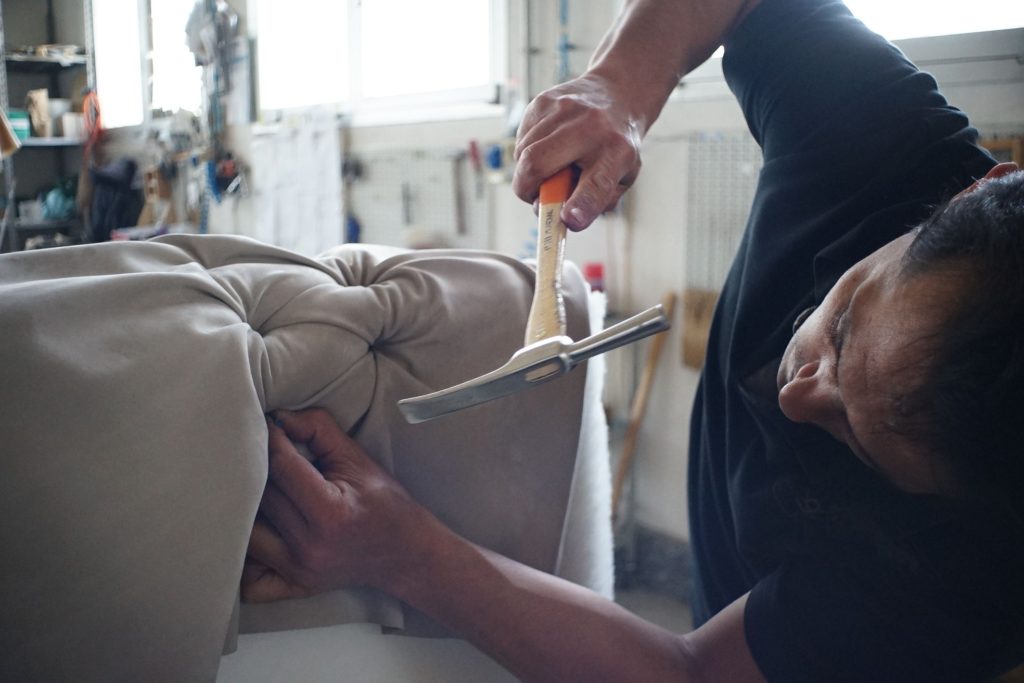Furniture repairs may seem simple; if you need to fix something, it must not be too complicated, right? But, unfortunately, the truth is that fixing up your furniture is not always as easy as it sounds. Even the most basic repairs can go wrong with just one false move.
Whether you’re an amateur or professional, some common mistakes must be avoided when undertaking a furniture repair job. Keep reading to learn about some of the most common pitfalls and how you can prevent them in the future.
Repairing Wood With Wood Filler
One of the most common mistakes people make with wood furniture repair is using wood filler instead of actual wood. Wood filler is a repair material that will not last as long as real wood.
If you need to repair a hole in your wood furniture, use a piece of scrap wood that is the same size and shape as the hole. Cut it to fit into the hole, and then use wood glue to attach it. Once the glue has dried, you can sand down the area.
Using Nails and Screws on Chairs
The most common mistake made with wood furniture repair is using nails and screws. While it is true that screws are easier to use than nails, they are not always the best option because they may not hold up over time.
The best option is to use wood glue. It will adhere to wood and metal and create a more durable repair. However, using nails can also damage the piece of furniture you are trying to repair.
Wood is susceptible and can be damaged by even small nail punctures. Because of this, it can be challenging to repair and increases the chance of further damage. A better solution would be to use a clamp or weights so that the furniture doesn’t move under pressure.
Repairing Furniture With Polyurethane Glue
There are several reasons why polyurethane glue can fail to hold furniture together:
- Adhesive might be too old or improperly mixed
- Wood might not be clean enough for the glue to work correctly
- Wood might be too dry, which prevents the adhesive from bonding properly
You can avoid these problems by using a fresh batch of glue and keeping your furniture as dry as possible. Before gluing it together, you should also ensure that your wood is clean and free of dirt or dust. When in doubt, follow the instructions on the label and take extra care when working with polyurethane glue.
Trying to Fix Furniture Without the Right Tools
If you’re trying to do fast furniture repair or refinish furniture, it may be tempting to skip the right tools in favor of a quick fix. But this can lead to problems like scratched finishes and broken parts that are difficult to repair.
If you want to do it yourself, ensure you have the right tools for the job. If you don’t, it will take longer and damage your pieces. It’s also a good idea to wear safety glasses. When working with leather, it’s also important to use specially designed items to avoid scratches and blemishes on the surface of the leather.
Not Properly Measuring Before Beginning the Repair
It would help to start with the correct measurements before beginning any furniture repair project. You can’t stick some tape to the surface and call it good enough.
It’s essential to measure the entire piece of furniture you need to repair, including all dimensions, and then ensure that those measurements are accurate before starting any repairs. If it turns out that they aren’t accurate, you could end up having to do additional modifications or even start over completely.
Applying Too Much Pressure When Sanding
Applying too much pressure when sanding or scraping your furniture is a common mistake. Because the furniture’s surface is dry, it’s possible to over-pressurize the wood, damaging the finish.
Low-pressure sanding is safer because it allows you to sand using lighter pressure and still gets a smooth finish. To prevent over-pressuring, make sure your work surface is level and steady.
Not Applying Enough Pressure While Sanding
On the other hand, applying too little pressure while sanding can cause uneven and splotchy surfaces. While most sandpaper comes with an instructional guide that will let you know how much pressure to apply, it’s still important to check your work.
If you are unsure of the right amount of pressure, ask a furniture restoration professional or try using a different brand of sandpaper. Avoid over-sanding as well!
Not Cleaning the Surface of the Leather Before Repairing It
Suppose leather is not cleaned before it is repaired. In that case, the dirt and grime accumulated on the surface will be sealed, making it difficult to clean in the future. Therefore, it’s essential to use a leather cleaner or saddle soap to clean the leather before beginning any repair work. Doing this will remove any dirt, oil, or grime that could prevent the leather from bonding properly with the repair materials. Leather is a durable material used in many applications, making it an attractive option for furniture. However, leather will show signs of wear and tear over time. This can occur if the leather is not cleaned and maintained correctly.Failing to Test the Color Before Dyeing Leather Furniture
When trying to repair leather furniture, it’s crucial to test the color before dyeing it. Doing this will help you avoid any mismatches that could occur. You can test the color by applying a small amount of leather dye to an inconspicuous furniture area. Once you’ve used the leather dye, allow it to dry for 24 hours before deciding whether or not to proceed with the repair. Failing to test the color before dyeing leather furniture can lead to unwanted surprises in the final product. Most leather dyes are susceptible to the exact shade of color you’re trying to achieve. They will also react differently depending on what you’re dyeing. If your leather is too light or too dark, you’ll leave with a different outcome than you had hoped. To avoid this, always start by testing a small area of your leather to see how the color reacts before dyeing the whole piece. If it turns out that the results aren’t what you were expecting, make sure to double-check your dyeing method and any other steps involved in the process.Not Using the Right Type of Leather Cleaner
When leather furniture shows signs of wear and tear, it’s essential to clean it properly. Doing this will help extend the life of the furniture and keep it looking its best. However, not all leather cleaners are created equal. Some leather cleaners contain harsh chemicals that can damage the leather over time. Others don’t have enough cleaning power to remove dirt and grime. For this reason, it’s crucial to use a leather cleaner designed for leather furniture. This will ensure that your furniture is cleaned without causing any damage.Attempting to Repair Leather Furniture Yourself
Leather furniture repair is not a do-it-yourself project. Instead, leather furniture is delicate and complex, requiring special care and attention to repair.
Attempting to repair leather furniture yourself is a common mistake that can lead to further damage. Instead, always leave leather furniture repairs to the professionals to avoid making the damage worse. This will ensure that your furniture is repaired and will last many years.
Furniture Repair and Restoration in Tacoma, WA
So if you’re planning on tackling a furniture repair project, it’s essential to be aware of these common mistakes to avoid them. With proper preparation and knowledge, you can ensure that your furniture repair project goes smoothly and that your furniture looks great when it’s finished.
If you need help with your furniture repair project, contact Hammond Knoll for professional furniture repair and restoration in Tacoma, WA. We have the experience and knowledge to help you avoid these common mistakes and get the job done right for you.

